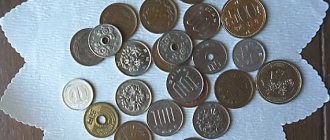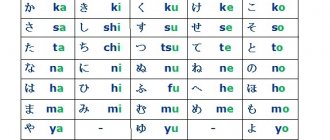The most popular Asian currency is, of course, the Japanese yen. According to the latest Bank for International Settlements Forex report, the Japanese currency remains the third most actively traded currency in the world, accounting for 17% of foreign exchange transactions. If you want to know more about the Japanese Yen, its exchange rate, and how you can take advantage of changes in the Japanese Yen exchange rate, then this article is just for you. Let's start!
Japanese yen: history
The official currency of Japan is the Japanese yen, and it was introduced by the New Currency Act in 1871 in hopes of stabilizing the monetary system in the “land of the rising sun.” The yen replaced the Tokugawa-era monetary system, which was quite complex and was based on copper coins. The word "yen" in Japanese means a round object, and the currency symbol itself is JPY.
Following the devaluation of silver in 1873, the newly introduced Japanese yen became worthless compared to some of its major competitors, such as the US and Canadian dollars, which had adopted the gold standard.
In 1987, the yen was worth just 50 cents. That same year, Japan also adopted the gold standard, and this stabilized the value of the currency.
Japanese yen: safe haven asset
In addition to being the third most popular currency in the world after the US dollar and the euro, the Japanese currency is also the fourth reserve currency after the dollar, euro and British pound. And most importantly, the Japanese yen is considered a safe haven asset in difficult market times, along with government bonds, gold, the Swiss franc and others.
What is the reason for this status? Let's figure this out.
- Japan has had very low interest rates for quite some time. So it's very cheap to use the yen to finance other investments.
- Japan is one of the largest and most developed economies in the world, it has shown amazing stability in the most difficult periods, and this significantly increases the demand for Japanese government bonds in times of crisis.
- High liquidity of the yen. We have already mentioned above that the Japanese yen is the third most popular currency in the world.
Therefore, remember: every time you hear about serious political clashes, when there is a threat of armed conflict, when talk about a global crisis, a global pandemic and anything else begins, you can safely expect changes in the rates of such currency pairs as the yen-dollar, yen-euro and so on.
START TRADING
Japanese yen and the Central Bank of Japan
The Bank of Japan was created in 1882 to control the money supply and prevent other countries from minting the Japanese yen.
Since the 1990s, Japan's economy has been "chronically ill" with deflation, and Japan's central bank has taken certain measures to counter the country's deflationary spiral. In 1999, Japan's central banks set a course for increasing consumer inflation by launching the world's first quantitative easing program.
However, the Bank of Japan's efforts have not been successful, especially after the 2008 global financial crisis. In 2013, the central bank teamed up with the Japanese government led by Shinzo Abe to achieve an inflation target of 2%. However, the consumer price index is still far from the bank's goals.
Is the Japanese currency comparable to the ruble?
There is a downward trend in the cross rate of the Yen against the ruble. However, it is significant only for traders trading on intraday turnover.
The Japanese currency against the ruble is stable and has a narrow range of amplitude fluctuations, which makes it possible to predict the behavior of both monetary units in the long term.
What is the secret of the Japanese miracle? The answer lies on the surface:
- Low % unemployment.
- High demand for deposits among residents.
- The vector of state policy is to increase the well-being of citizens.
But keep in mind, the Japanese mentality is a 100% guarantee of the success of the country’s economic growth. Government support for domestic consumers leads to mutual support among Japanese residents for the elected government, which avoids exhaustive militarization of the economy.
What factors influence the exchange rate of the Japanese yen?
For every currency in the world, there are fundamental factors that can seriously affect its price. The Japanese yen is no exception. But let's look at some of the main drivers of the Japanese yen:
- Monetary policy of the Central Bank of Japan.
- Sentiment in financial markets.
- Economic indicators.
Let us now consider each of them separately.
Japanese yen and monetary policy
As you can see, the Bank of Japan is responsible for controlling the money supply and monetary policy in general. And he has pursued an extremely expansionary monetary policy for many years with a lot of economic stimulus, such as:
- negative interest rates
- asset purchase programs
- government bond yield curve control.
Yield curve control involves keeping the 10-year Japanese bond yield near 0 while short-term interest rates remain negative. The goal of this approach is typically to steepen the yield curve, which in turn widens the gap between the yields on short-term and long-term government securities.
The relationship between bond yields (not only Japanese but also American) and the Japanese currency is very strong. For example, it often happens when the price of bonds in the US rises, i.e. their profitability is declining, and at the same time the demand for the Japanese yen is growing. The opposite is also possible.
Negative interest rates in Japan since the 1990s mean the yen is great for borrowing. This provokes such trading strategies as, for example, the “Carry trade”. In it, traders make profitable loans in Japanese yen to purchase high-yield assets. And this allows them to receive the difference between interest rates as income.
Market sentiment and the Japanese yen
In fact, the Japanese yen is one of the most vulnerable currencies to market sentiment. When the market feels confident and calm, investors and traders begin to show interest in highly profitable assets with a high degree of risk. That is, stocks, oil, Australian, New Zealand and Canadian dollars.
And vice versa, as soon as macroeconomic events take a bad turn, investors immediately turn to safe haven assets. This is logical, people want to protect their capital as much as possible, which means they make the safest investments possible, and, as we already know, the Japanese yen belongs to this group of assets.
In principle, it can be said that there is an inverse correlation between the Japanese yen and risky assets such as stocks. That is, in essence, the yen has become an indicator of how high risk tolerance is now in the market and how comfortable its participants now feel.
Hint: if the yen is in great demand, there is no need to talk about comfort.
Origin of the name yen
The origin of the name yen is curious. It is connected with the history of trade in Asia. During the Qing Dynasty, China used yuan - silver bars. In the 18th century, silver coins were brought to China from Mexico and Spain, which became known as Western yuan. Then the British started producing silver coins, which they called Hong Kong yuan - after the place of issue. They eventually ended up in Japan, where they received the name in Japanese - “en”. Subsequently, the “en” gradually transformed into the yen. Already in 1830, they began to issue their own coins here. The official name “yen” appeared a little later.
Economic data and the Japanese yen
Economic indicators can often have a significant impact on the price of local currencies, but Japan is a special place and has its own rules.
Due to the atypical monetary policy in the “land of the rising sun,” fundamental economic indicators do not have as serious an impact on the exchange rate of the Japanese yen against other currencies as might be expected.
But some economic indicators are still worth monitoring; they can help understand and even predict the Bank of Japan's next actions. For example:
- Consumer price index
- GDP
- Industrial production
- Tankan Index
Now that you already know a little about the history of the Japanese yen, why it has the status of a safe haven currency and what factors influence its price, let's look at how to start trading it. The most popular currency pairs are USD/JPY and EUR/JPY.
And you can start trading them right now without losing anything at all as we have a free demo account and you can open one right now. Just click on the banner below.
Japanese yen on Forex: how to trade?
The forex or foreign exchange market (also called FX for short) is a market in which currencies are traded. In fact, if you have exchanged currency at least once in your life, for example, while on vacation, you are already participants in this market.
According to the Bank of International Payments, approximately $5.1 billion is traded in the Forex market per day. We are, of course, also talking about exchanges between government organizations, corporations, banks and simple speculators.
World currencies are traded in pairs. The first currency listed in currency pairs is called the base currency, and the second is called the quote currency. And their ratio is called the currency quote. It shows how much quoted currency is needed to purchase the base currency.
It should be noted that the second most popular currency pair in the world is USD/JPY. Other most traded Japanese Yen currency pairs are:
- Euro/yen (EUR/JPY)
- British pound/yen (GBP/PY)
- Swiss franc/yen (CHF/JPY)
- Canadian dollar/yen (CAD/JPY)
- Australian dollar/yen (AUD/JPY)
- New Zealand dollar/yen (NZD/JPY)
Forex is considered the most successful place for currency trading. There are other options such as currency futures, but they require more capital, are less liquid, and also have a specific expiration date.
Let's take the example of the USD/JPY (dollar/Japanese yen) currency pair. It is the world's most traded yen currency pair. The USD/JPY price chart below shows that this pair has been trading in a range of up to 1103 pips for just over a month.
High volatility can offer traders many opportunities to make a profit, but you need to understand that the risks also increase significantly.
Source: Admiral Markets, MetaTrader 5, USD/JPY, Daily, data range: September 10, 2021 - April 2, 2021 Prepared: April 2, 2021, 21:00 Please note: data presented refers to historical performance and does not are a reliable indicator of future results.
Japanese yen: why trade?
At the beginning of this part of the article, we have already mentioned some of the main advantages of trading and investing in the Japanese Yen, namely the liquidity of the currency, its security, etc. But let's see if there are other factors that can tip the scales in favor of trading the Yen on Forex:
- You can trade currency pairs with JPY 24 hours a day, 5 days a week.
- You can choose the timeframe that suits you best and take advantage of the increased volatility in the market.
- Trading the major currency pairs guarantees you high liquidity, especially when combined with the extremely fast execution of orders in Admiral Markets.
- Our USD/JPY spread is 0.9 points.
- You can trade both rising and falling prices.
- Use leverage up to 1:30 for non-professional clients and up to 1:500 for professional clients
- With Admiral Markets you have no maximum limit for placing stop loss and take profit orders.
However, there are also disadvantages to trading the Japanese yen:
- Trading Japanese Yen currency pairs (USD/JPY, EUR/JPY, GBP/JPY, CHF/JPY, CAD/JPY, AUD/JPY and NZD/JPY) is subject to swap fees.
- Using leverage when trading Forex can be dangerous if you are not confident in your abilities.
However, rest assured that there are simple solutions to solve these problems! For example, strictly apply risk management strategies to your Japanese Yen positions.
Japanese yen exchange rate
If you have assumptions about how a particular currency pair with the yen will behave, then you can use these assumptions. But you need to clearly understand that your assumptions must have a certain basis. In order to be a successful trader in the long term, you must have a clear strategy and a good understanding of what you are doing.
For example, traders use fundamental and technical analysis to make informed investment decisions. We have already talked a little about fundamental analysis, now let's discuss technical analysis in detail.
You will need to learn how to identify support and resistance levels, Fibonacci levels, and use moving averages, MACD, RSI, and Bollinger Bands, just to name a few technical analysis tools.
Let me introduce you to our wonderful Zero to Hero course, it is completely free, it will teach you trading from scratch, will allow you to understand all the tools listed above and will perfectly prepare you for real trading. You will find a huge number of video lessons, detailed explanations, and if you have never tried your hand at trading before, try to start now. Click on the banner and come study, we are waiting for you!
Here are some tips for more successful trading of the Japanese yen:
- Create a detailed trading plan for a currency pair that includes JPY.
- Analyze the performance of the dollar index to find out the strength of the US currency.
- Test your trading strategy to ensure it is sound.
- Consider how to minimize risks to protect your capital.
- Stay patient and stick to the previous points while trading.
All of these Forex trading tips can be applied to trading absolutely any trading pairs. However, only regular practice on a real account can allow you to gain enough experience in the Forex market.
Japanese yen: technical analysis of the USD/JPY currency pair
In this strategy, we will use two technical indicators to analyze the price of the Japanese yen. We will use the USD/JPY currency pair:
- Amazing oscillator
- Fractals
To begin, determine the trend of a currency pair using Bill Williams' Amazing Oscillator indicator. The indicator is located under the Japanese yen price chart and looks like a colored histogram with a zero level.
- If the oscillator moves above 0 and is solid green, the dollar-yen pair is in a strong uptrend.
- If the oscillator moves above 0 and is red, then the dollar-yen pair is in a strong downtrend.
But the signal to conclude a deal will come from another Bill Williams indicator called Fractals. This indicator identifies short-term support and resistance levels on the Japanese Yen trading chart.
- If the price breaks the last fractal that marks the top of the chart, the price is likely to rise.
- If the price breaks the last fractal that marks the bottom of the chart, the price is likely to fall.
Now place the two technical indicators mentioned above on the USD/JPY chart:
Source: Admiral Markets, MetaTrader 5, USD/JPY, Daily. Data Range: September 10, 2021 – April 2, 2021 Prepared: April 2, 2021, 9:45 p.m. Please note that the data presented refers to past performance and is not a reliable indicator of future results.
This example illustrates a breakout of the USD/JPY daily chart's horizontal support line identified by the Fractals indicator in a downtrend. The trend is established using the Great Oscillator technical indicator.
Japanese yen and US dollar: scalping
The major Forex pairs are favorites of traders using scalping strategies. And USD/JPY is one of the most popular pairs for scalping or speculation during the US trading session.
Trading with a minimum time frame is generally quite a promising direction and opens up a lot of opportunities for traders. But be careful, even a hundred open positions does not necessarily mean a big profit; a lot depends on the current market situation and your strategy.
Japanese yen and US dollar: daily timeframe
Like scalping, USD/JPY day trading also aims to profit from price movements throughout the day.
What distinguishes these two timeframes is mainly the number of positions and the actual time frame. Traders who prefer day trading are unlikely to work in an interval of less than five minutes. But in scalping you often have to use minute charts, and sometimes less.
Japanese Yen and US Dollar: Swing Trading
If you already have a full-time job, it will be difficult for you to spend several hours a day tracking currency pair trends. But even for such cases there is a suitable option, and it is called swing trading.
Swing trading comes close to an investment approach because traders who practice it do not have to spend a lot of time in front of screens on charts. This type of trading can allow you to find the right trading opportunities over longer time frames.
It can be several days, several weeks or even months; on such time frames there is less room for maneuver and opportunities, but they are of higher quality.
And we at Admiral Markets can offer you the best platform for trading with any time frame and a huge number of assets.
Start trading Forex in any style and with any strategy, with the world's #1 platform for multi-asset trading - MetaTrader 5. Download the MetaTrader 5 platform completely free by clicking on the banner below!
Japanese yen: correlation of USD/JPY with other instruments
In the financial and investment sphere, correlation is an indicator that measures the dependence of the price movements of two financial assets. It is calculated as a correlation coefficient; the value can vary from 1 to -1. Correlations are often used to manage a portfolio of financial assets and derivatives.
When we talk about currency correlation, we are talking about the relationship between two currency pairs. A correlation of 1 means that two currency pairs are perfectly correlated and their prices move in the same direction all the time. Conversely, when the movement of currency pairs is completely opposite, the value of their currency correlation is equal to -1.
Not many brokers can offer you the tools to understand the relationship between assets. With Admiral Markets, you get the opportunity to use a system called the Correlation Matrix, which will help you find out what the relationship is in the prices of various financial assets. You can find the correlation matrix in our unique MetaTrader Supreme Edition plugin.
With its help, you can easily determine both direct and inverse correlations between different types of assets. For example:
- Currency pairs USD/JPY and EUR/JPY are directly related to each other.
- USD/JPY and EUR/JPY are inversely related to gold, which proves that safe-haven assets like JPY and gold tend to rise in tandem.
The basic principle here is quite simple - the Swiss franc, gold and Japanese yen are safe assets, and traders and investors pay attention to such assets first in difficult times. At the same time, usually stock indices such as the SP500, Dow Jones and DAX 30, as well as currencies such as AUD, NZD and CAD, lose popularity and inflow of investors, and therefore have a correlation inverse to safe assets. Of course, there are no guarantees, only observations supported by statistics, but such a trend does exist.
Coins, design, symbol
One yen is equal to 100 sen. International designation – JPY.
The banknote denominations are 1000, 2000, 5000 and 10,000 yen.
Coin denominations are 1, 5, 10, 50, 100 and 500 yen.
The banknotes depict famous Japanese writers and educators.
For 1000 yen
– Hideyo Noguchi (1876-1928), bacteriologist, winner of the Imperial Prize of the Japanese Academy of Sciences.
For 2000 yen
- a painting of a gate in the city of Nahu, dedicated to Murasaki Shikibu (978-1016), poet and writer, author of the novel The Tale of Genji.
For 5000 yen
– Ichiyo Higuchi (1872-1896), Japanese writer.
For 10,000 yen
– Fukuzawa Yukichi (1835-1901), philosopher and educator who lived during the late Edo and Meiji eras.
Japanese Yen in Forex: Best Hours to Trade
- From 16:30 to 19:30 Estonian time (the same time as in the MetaTrader or WebTrader platform).
- From 02:00 to 11:00 on the MetaTrader or WebTrader platform.
The first point refers to the opening hours of the American stock exchange, plus the second part of the European session is added to it. It is during these hours that the highest trading volumes are recorded.
The second point relates to the hours on the Asian stock markets, which often influence trading of the Japanese yen. You can observe interesting movements in the exchange rate of the Japanese yen against the dollar and the Japanese yen against the euro when trading in Asia.
If you are trading the USD/JPY pair, you should also keep an eye on US news as it usually triggers a change in the value of the dollar and therefore the price movement of the currency pair. By the way, to better track important events, you can use the economic calendar from Admiral Markets!
Economic calendar trading is popular with many Forex traders because it allows them to trade for just a few minutes each day when important economic news is released. Sometimes they cause very serious price movements!
Whether you are making a dollar swing trade or a yen scalping trade, the concept of timing is important to get back to a better price or in a good way after major economic data.
Japanese Yen: How to buy USD/JPY?
- Login to your Admiral Markets account (WebTrader/MT4/MT5, Mobile App, etc.)
- Open the Market Status tab.
- Look for the USDJPY currency pair.
- Right-click on the currency pair and select “Chart Window.”
- When the chart appears, click the New Order button.
- Select your entry level, stop loss, target levels and position size (volume) and then confirm the trade.
Japanese Yen: How to sell USD/JPY?
- Login to your Admiral Markets account (WebTrader/MT4/MT5, Mobile App, etc.)
- Open the Market Status tab.
- Look for the USDJPY currency pair
- Right-click on the currency pair and select “Chart Window.”
- When the chart appears, click the New Order button and select the number of lots.
- Click the "Sell" button.
Japanese currency against the dollar: reality and fiction
The dynamics of the specified JPY/USD pair reflects purely economic processes.
The peak of the exchange rate with a linear sideways trend of 125.61 occurred in the summer. To date, there has been a decrease of 1.51 points, which is due to a number of factors:
- Differences in the monetary policies of both countries.
- Lack of significant influence of the Euro on the Yen.
You can make your own forecast. When predicting the trajectory of the JPY, keep in mind that the Japanese currency will decline against the dollar due to factors:
- Programs for increasing the Asian money supply.
- Reductions in US export operations due to the tripling of the dollar.









